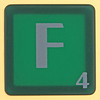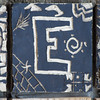My favorite tools in my toolbox are Video Resources and apps for I-Touches.
These are my favorites because Google Video and U-Tube will enable me to access information that I cannot find on Brainpop, Springbranch Video Streaming or the Sweden folder. This will be especially useful as our Science Curriculum has changed this year and it is sometimes difficult to find the necessary information for lessons.
The apps for I-Touches are a great tool for the students because their parents have I-phones and they know how to work them so they learn and enjoy the apps with their center partners.
I will observe my students using the I-touches in Center times to make sure that they are being used in the correct manner and that the students are following the rules of digital etiquette and learning what I have assigned.
My thinking has changed as a result of these tools because it has brought me up to date with the rest of the world on technology in the 21th Century because I was not aware of all of these possible technology tools and their possible benefits to my teaching. I feel that I am more of a facilitator now who will promote these tools for students to use independently in the classroom.
An unexpected outcome for this program is that I find that I would like to more fully explore many of these technology tools but I don't have enough time to do it.
Saturday, January 29, 2011
Tool # 11 Practicing Good Digital Citizenship
I would teach the above tool through the showing of 3 videos on Brainpop, Cyberbullying, Digital Etiquette and Digital Citizenship.
It is important that students keep their passwords secret so that others cannot send emails using their identities. Also, students need to know how to send emails and who to send emails and the appropriate language for email messages or on-line conversations.
Regarding Cyperbullying, students must be made aware that they cannot be threatened or bullied in any way via email.
Students need to be cognizant that people can lie about their age and act like they are young children when in reality they may be adult predators.
In addition, students need to understand the punctuation to use for different comments and that using capital letters can mean shouting.
As their teacher I will be monitoring all of their on-line communication to ensure that it is within appropriate guidelines.
It is important that students keep their passwords secret so that others cannot send emails using their identities. Also, students need to know how to send emails and who to send emails and the appropriate language for email messages or on-line conversations.
Regarding Cyperbullying, students must be made aware that they cannot be threatened or bullied in any way via email.
Students need to be cognizant that people can lie about their age and act like they are young children when in reality they may be adult predators.
In addition, students need to understand the punctuation to use for different comments and that using capital letters can mean shouting.
As their teacher I will be monitoring all of their on-line communication to ensure that it is within appropriate guidelines.
Tool #10 Exploring Mobile Technology and Apps.
In my classroom I have five I-Touches that were recently activated for my students.
They have many free apps on them for Language Arts and Math. Some of the Language Arts Apps have word games in Spanish that the students can use to help them achieve proficiency in Spanish sight words and writing sentences in Spanish. The math games involve adding and subtracting and using number sense. The students are using these in center time and sometimes if they have some free time they are anxious to use the I-Touches.
I will continually check in at the Apple Store to see if I can find other useful apps to download.
They have many free apps on them for Language Arts and Math. Some of the Language Arts Apps have word games in Spanish that the students can use to help them achieve proficiency in Spanish sight words and writing sentences in Spanish. The math games involve adding and subtracting and using number sense. The students are using these in center time and sometimes if they have some free time they are anxious to use the I-Touches.
I will continually check in at the Apple Store to see if I can find other useful apps to download.
Tool # 9 Sharing Information through Jing and Skype
Jing is the process of sharing a screen or a movie on-line. I could see that this would be very useful in several ways. A teacher could use this to teach in any content area and make it more meaningful to the students by bringing realia into the classroom.
Another way to use Jing would be to bring parents into the classroom to view their son or daughter working in the classroom because it would allow the teacher to add visuals to on-line conversations.
Skype has become popular because it allows individuals to have a real time conversation with others and view their images at the same time. This would be great for parent conferences with those parents that were unable to come to school because of transportation problems, health concerns or just not being able to get off work to keep an appointment.
Skype can be used to do an author study so that the class can have an on-line conversation with the author to get an idea of how his stories are created.
In addition, Skype is another way to see the world for children. They can take a fieldtrip anywhere using Skype! They can go to Africa on safari or Antarctica to see the penguins.
Another way to use Jing would be to bring parents into the classroom to view their son or daughter working in the classroom because it would allow the teacher to add visuals to on-line conversations.
Skype has become popular because it allows individuals to have a real time conversation with others and view their images at the same time. This would be great for parent conferences with those parents that were unable to come to school because of transportation problems, health concerns or just not being able to get off work to keep an appointment.
Skype can be used to do an author study so that the class can have an on-line conversation with the author to get an idea of how his stories are created.
In addition, Skype is another way to see the world for children. They can take a fieldtrip anywhere using Skype! They can go to Africa on safari or Antarctica to see the penguins.
Tool # 8 Using Video Resources
This is a Video link from U-Tube to Lada Josefa Krazky who is one of the most famous authors of children's books in Spanish. She is telling the story El Leon y el Raton which children will love to hear from the author herself in Spanish. We have so many books written by her in the classroom but the students have never had the opportunity to meet Ms. Krazky. In finding this video link I also came across other interesting Spanish videos for students that would be very enjoyable to watch so I will encourage my students to get on their netbooks and partake of this resource.
http://www.youtube.com/watch?v=MKutGgq5lt8
Magic Schoolbus Making Rainbows- Weather
I searched Google Video and found this video link that looked very interesting and applicable to First Grade Science lessons.
http://www.gamequarium.org/cgi-bin/search/linfo.cgi?id=9689
http://www.youtube.com/watch?v=MKutGgq5lt8
Magic Schoolbus Making Rainbows- Weather
I searched Google Video and found this video link that looked very interesting and applicable to First Grade Science lessons.
http://www.gamequarium.org/cgi-bin/search/linfo.cgi?id=9689
Tool # 7 Creating Digital Stories
I can use this tool of Creating Digital Stories to record changes in my students over the course of the school year. I can record how they read at the beginning of the year and their progress at the end of the year. Also, their progress in speaking English can be viewed in this manner. Projects such as presentations of their research can be presented in this novel way. My students would really enjoy seeing this video and realize how much they developed in the above areas.
Tool # 6 Wikis
I can see that creating a Wiki Website would be beneficial to my students or to my First Grade Team. It involves a group sharing information, editing and saving. This could be used to write a grant as a team so that everyone could share and edit the information. For my students, it could be useful in the editing portion of the writing process so that I could communicate with more than one student at a time.
Subscribe to:
Posts (Atom)







